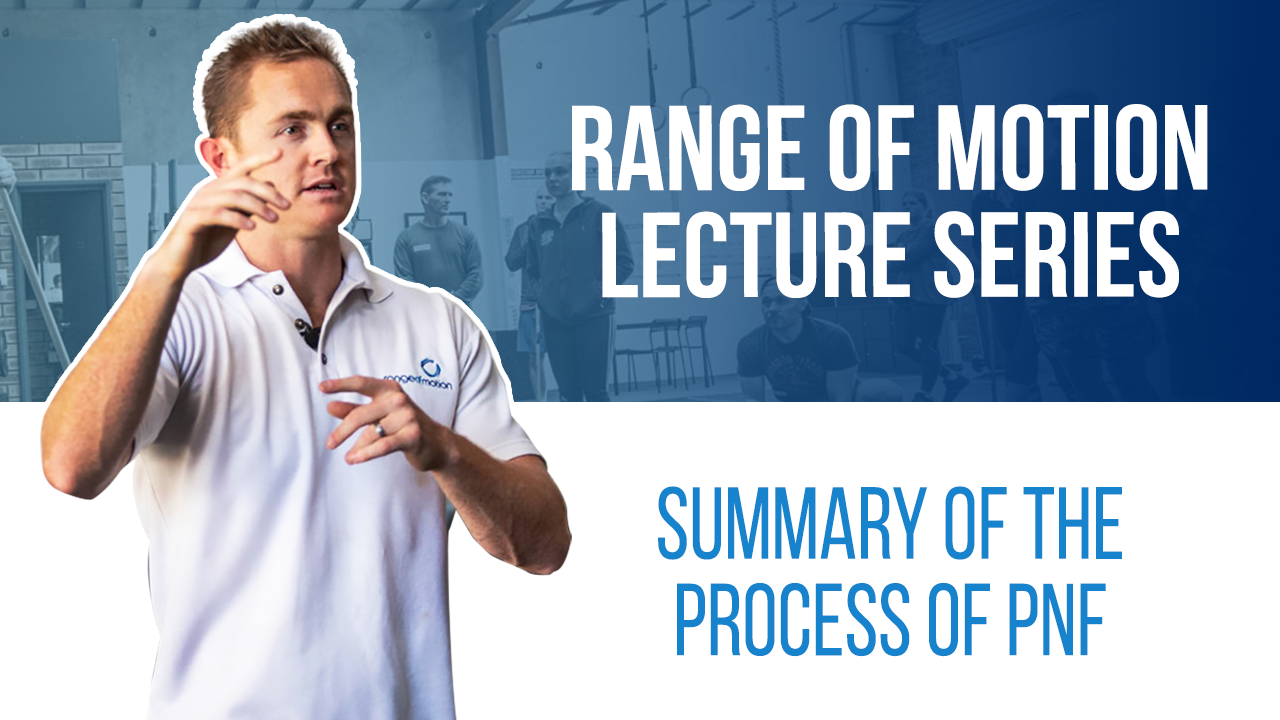Transcribed from video:
– Okay, test it first, how far are we going to go? Hm, that’s better. 80 degrees ish? Okay, we’re going slowly into a static stretch. We go slowly because we want to overcome the monosynaptic stretch reflex. That will be on your exam. There’s no exam. Overcome that monosynaptic stretch reflex. 7, 8, 9, 10. Then she’s going to pull away from me. It’s really good if your doing this with someone, just put your hand here and just say, “get off my finger,” good. Turning on the hip flexors, the quads, causing a reciprocal inhibition, a reciprocal opposite inhibition turn off of the hamstrings. Quads are relaxing, hamstrings … And relax. The quads were turned on, hamstrings were relaxed. We now get an increase in muscle length, ’cause that hamstring is starting to relax. 6, 7, 8, 9, 10. Push down against me. The Golgi tendon organs are now firing. Those little structures and the spindles of the muscle fibres and when they fire and then turn off, we get an increase in muscle length as a result. And then we give another 10 seconds. Just relax, relax, relax. Another 10 seconds to let that change in length take effect. Go slowly into a static stretch that overcomes the stretch reflex. Then, turn on the opposite muscle groups, so the ones that you’re stretching. That causes a reciprocal opposite inhibition, turn off. Static stretch again nice and slowly. Then turn on the muscle that you are stretching. Fires up those Golgi tendon organs. Then when you relax, you get an increase in length. And then, 10 or so seconds to let that change in length take effect. 10, 20, 30, 40, 50 seconds, under a minute per leg, you will have considerable improvement.





